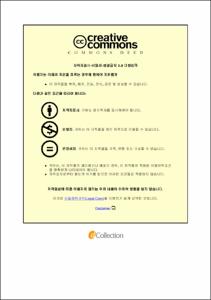Ulsan Univ. Repository
Thesis
General Graduate School
Environmental Construction Engineering
1. Theses (Master)
METHODOLOGICAL ASPECTS OF EMERGY ASSESSMENT FOR SUSTAINABILITY OF NEPAL AND IMPACT OF GORKHA-EARTHQUAKE
- Alternative Title
- 공작원의 네팔과 영향의 지속 가능성을위한 비상 사태 평가의 방법 론적 측면
- Abstract
- A system is considered as sustainable, if the processes do not harm the environment and provides suitable products to human society without undermining its future generations. Sustainability assessment is a comprehensive appraisal method that evaluates the extent of sustainability of systems and supports the development of sustainable strategies if system is not sustainable. The emergy method is one of the sustainability assessment tools that quantify the value of environment and economic resources that flow into the system and measures the impact of the system in the human sphere.
Emergy is defined as the total direct and indirect energy of one source type (solar energy) required producing product or providing a service. This is evaluated through a common unit of solar emjoule (sej). This common unit approach provides fair sustainability assessment in the evaluation of environmental resources, human services and economic resources to human well-being. Emergy indices calculated in the emergy assessment of a system such as emergy money ratio (EMR), environmental loading ratio (ELR), emergy yield ratio (EYR), emergy investment ratio (EIR) and environmental sustainability ratio (ESI) help to understand the overall sustainability of the system and provide clear ‘action- guiding power’ to decision makers. Since the development of emergy in the last three decades, this method has already been applied in various sustainability assessment systems such as industrial system, agricultural system, wastewater treatment system, eco-industrial parks, cities, provinces, nations, infrastructures, etc. This research has been divided into drawing out three novel outputs as follows:
1. Sustainability assessment of Nepal’s development: In this research, the emergy of Nepal from 1998 until 2015 was calculated first. A simulation of emergy parameters was then done for the next twenty-five years (until 2040) using Systems Thinking, Experimental Learning Laboratory with Animation (STELLA) modeling program. Finally, based on the simulated result, the sustainable policies for Nepal was recommended in terms of non-renewable resources extraction, trade, soil erosion control and renewable resources use.
2. Impacts study of natural disaster: The Gorkha-earthquake that hit Nepal in April 2015 was employed for the case study. The impact of the Gorkha-earthquake on society, economy and environment of Nepal was analyzed with the new perspective of emergy. The total emergy use of the country showed a decreased by 10 %. This caused the declined of per capita emergy use by 12 %, reducing the well-being of people in Nepal. All economic activities of the country were affected, which lowered the national production. The distinct impact was observed in the exports. The export was dropped by 50 % after the earthquake. Similarly, the import was also dropped by 2 %. Though, economic activities and non-renewable resource use were reduced, the positive impact was observed in the environmental load. The ELR was dropped from 6.79 before the earthquake to 5.98 after the earthquake. This suggests that the economic growth before the earthquake was more sustainable than after the earthquake because the contribution of renewable resources in the economic growth before was higher therefore, the environmental stress was lower.
3. Methodological aspects of emergy accounting in co-production system: The problem of transformity calculation in the co-production system network in previous methods was identified and the new method, modified physical quantity method (MPQM) was introduced to solve the problem. A case of Eucalyptus pulp production was applied to make a validation of the new method. MPQM followed all the rules stated in the emergy algebra. Finally, the transformity value calculated through the new MPQM was applied in the production efficiency analysis of Eucalyptus pulp production system. The result showed the pulp production industry was not efficient in resource use during its production because the joint transformity of pulp production is lesser than weighted average transformities.
- Issued Date
- 2017
- Awarded Date
- 2018-02
- Type
- Dissertation
- Affiliation
- 울산대학교
- Department
- 일반대학원 건설환경공학과
- Advisor
- Hung-Suck Park
- Degree
- Master
- Publisher
- 울산대학교 일반대학원 건설환경공학과
- Language
- eng
- Rights
- 울산대학교 논문은 저작권에 의해 보호받습니다.
- Appears in Collections:
- Environmental Construction Engineering > 1. Theses (Master)
- 파일 목록
-
-
Download
 200000013793.pdf
기타 데이터 / 2.68 MB / Adobe PDF
200000013793.pdf
기타 데이터 / 2.68 MB / Adobe PDF
-
Items in Repository are protected by copyright, with all rights reserved, unless otherwise indicated.